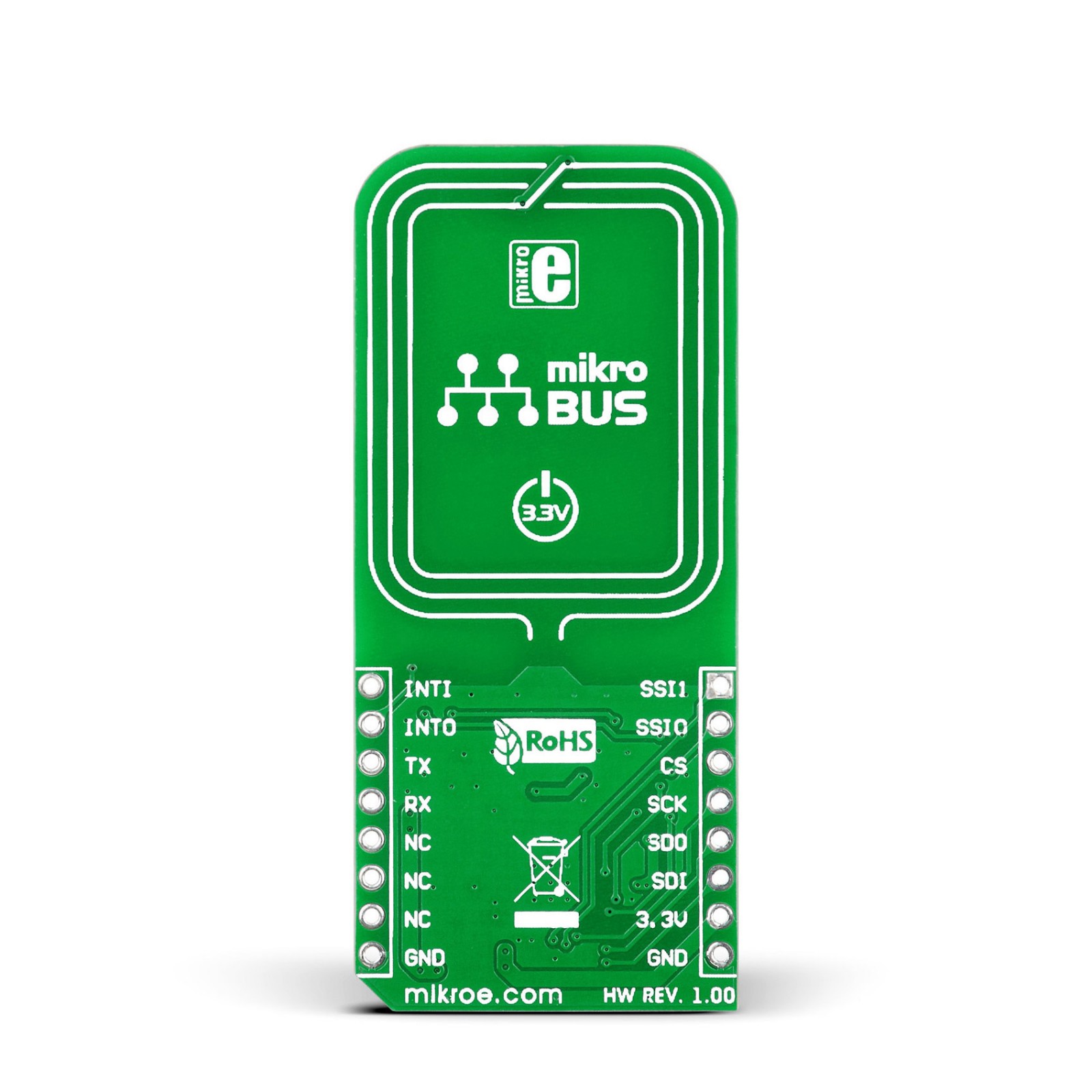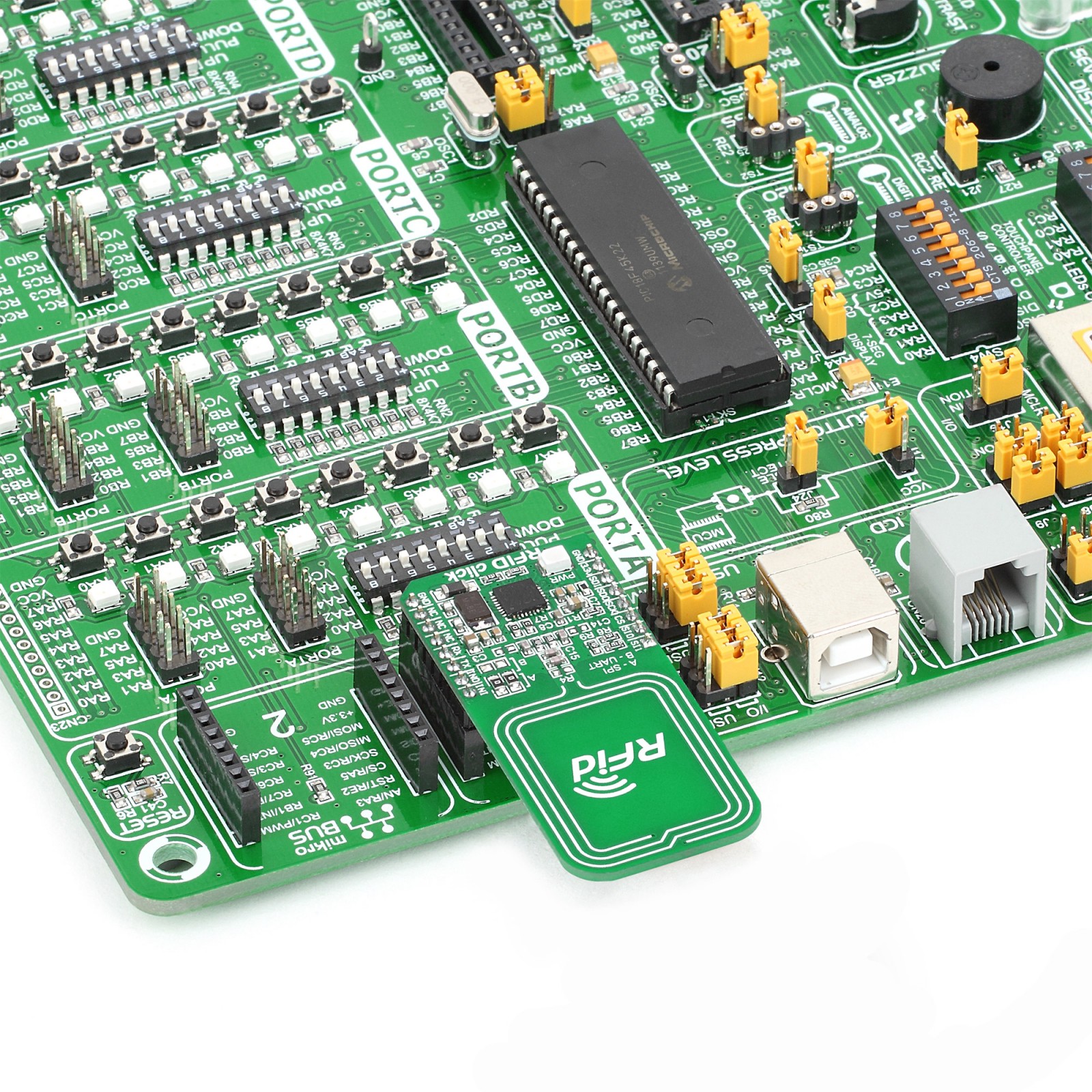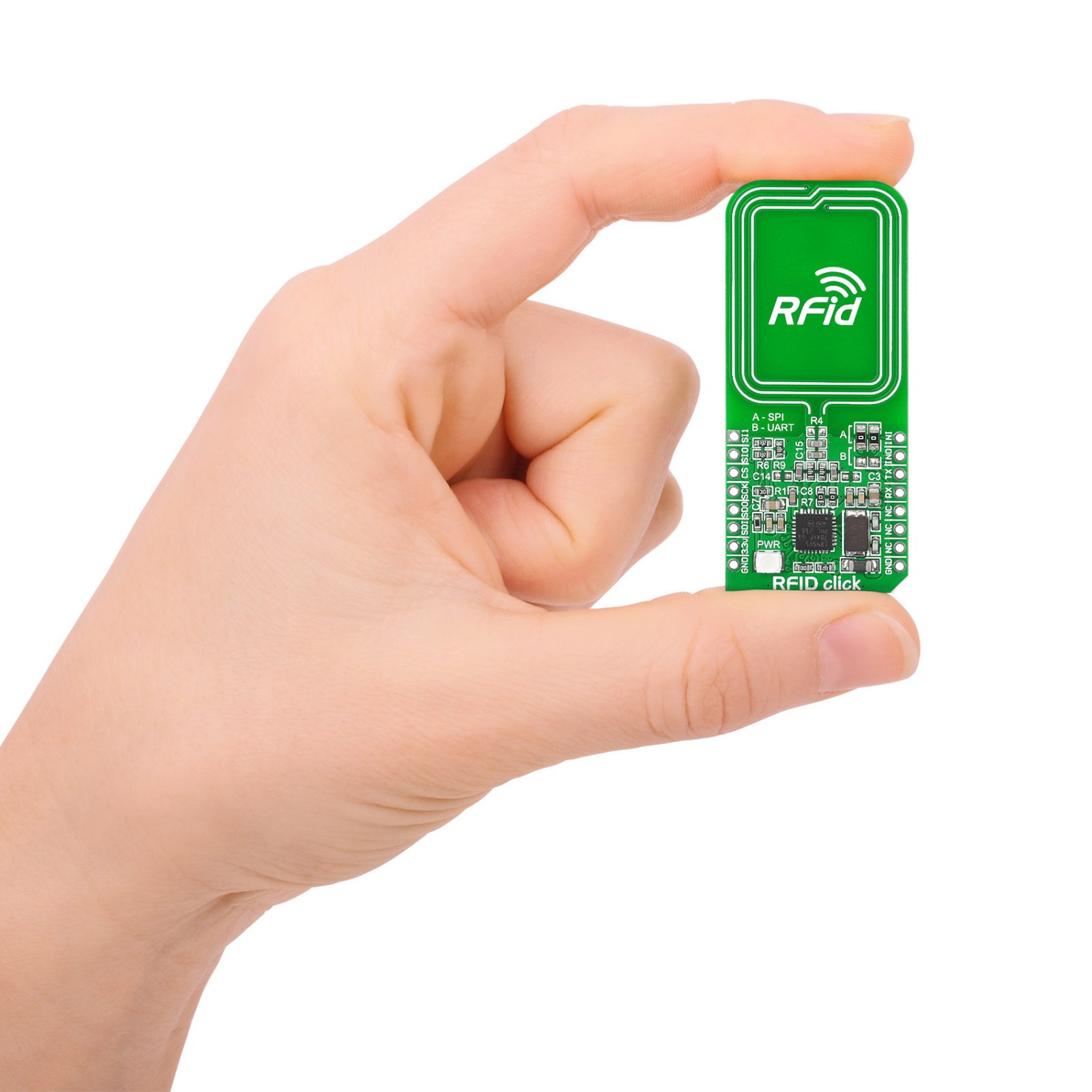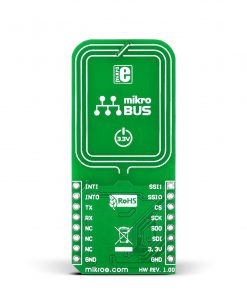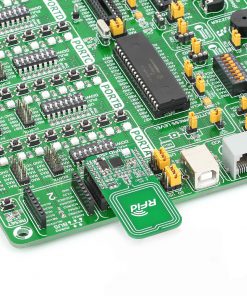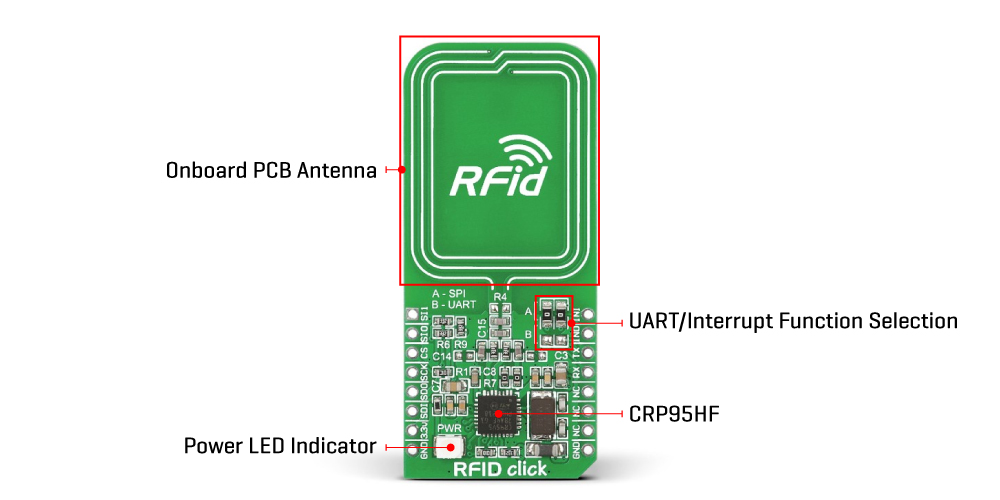RFid Click
R670.00 ex. VAT
RFid Click is a compact add-on board that equips any embedded application with an RFID reader/writer. This board features the CR95HF, a multi-protocol contactless transceiver from STMicroelectronics. It provides RF communication on 13.56MHz and works with NFC/RFID tags and other ST reader products. Besides a selectable interface, it has up to a 528-byte command/reception buffer (FIFO), a tag detection mode, and a highly integrated Analog Front End (AFE) for RF communications. This Click board™ makes the perfect solution for applications with 13.56 MHz RFID tags or identification cards, tracking, and security systems that need RFID support.
RFid Click is supported by a mikroSDK compliant library, which includes functions that simplify software development. This Click board™ comes as a fully tested product, ready to be used on a system equipped with the mikroBUS™ socket.
Stock: Lead-time applicable.
| 5+ | R636.50 |
| 10+ | R603.00 |
| 15+ | R569.50 |
| 20+ | R548.06 |


